Panasonic Lumix DMC-FZ18 Review
Panasonic Lumix DMC-FZ18
With a huge 28-504mm 18x zoom and optical image stabilisation, Panasonic's new flagship is hard to fault
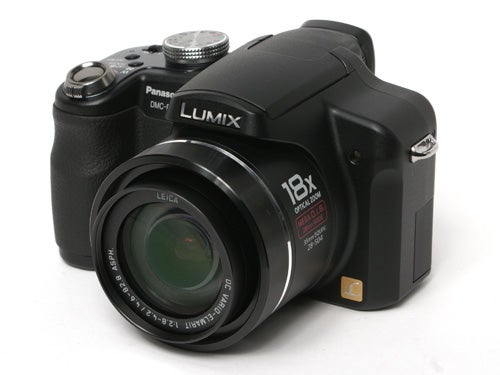
Verdict
Key Specifications
- Review Price: £299.95
Anyone who’s interested in photography as a hobby will want a bit more versatility in their camera than is offered by a simple point-and-shoot compact. Many will opt for a digital SLR, but for those whose budgets are a little more restricted, or who don’t want the hassle and bulk of a kit bag full of lenses and accessories, there are a number of high-specification super-zoom cameras that offer almost the same level of performance and sophistication. These usually feature lenses of 10x or more optical zoom, covering the whole range from wide angle to extreme telephoto, as well as numerous creative options including manual exposure controls, advanced metering and multiple focus options. Because of the size of the lenses, most super-zoom cameras are relatively large and have SLR-style handling.

Panasonic has been a key player in the super-zoom field since the launch of its impressive Leica-lensed Lumix DMC-FZ1 back in 2002, and has maintained this position with a series of well-received models in the same series. Today I’m taking a look at the latest in the line, the FZ18, which offers a tempting specification for anyone with £300 to spend. It has an 8.1 megapixel CCD, 2.5in 230k LCD monitor, RAW mode shooting and a massive 18x Leica zoom lens with optical image stabilisation and a 28-504mm equivalent focal length range. There are few cameras on the market that even come close to matching a features list like that. The closest contenders are the slightly disappointing Olympus SP-550UZ (£255), or Fujifilm’s Finepix S8000 fd, although that camera isn’t even available until September. The current super-zoom heavyweights, the Canon PowerShot S5 IS (review coming soon), the Fujifilm Finepix S9600, the Sony DSC-H7 and even the previous holder of the “biggest lens” title the Samsung Pro815 can’t match that huge zoom range.
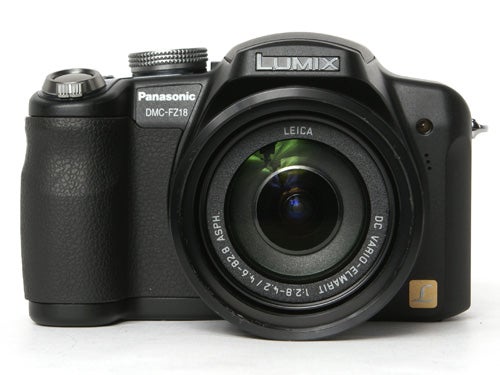
Panasonic has taken few chances with the design of the FZ18. Its overall shape and layout are little changed from its popular predecessor the 12x zoom FZ8, although it is a few millimetres larger in every dimension. In fact the basic style of Pansonic’s super-zoom FZ range has changed little since the FZ1, but it was a pretty sound design to start with, so if it ain’t broke there’s little point in fixing it. The FZ18 has the classic SLR shape, with a simple rectangular box-like body that protrudes both left and right of the large lens barrel, a prominent rubberised handgrip and a large electronic viewfinder set into a pentaprism-like turret above the lens, a feature which also houses the pop-up flash. The comprehensive control layout is also similar to a digital SLR, with a large and well-stocked mode dial on the top panel and numerous buttons providing external controls for most common shooting options.
At 360g the FZ18 is about 50g heavier than the FZ8, mostly due to the larger lens, but it is by no means a heavy camera. It is nearly 200g lighter than the Canon S5 IS, and less than half the weight of the Fuji S9600. It’s also 100g lighter than the Olympus SP-550UZ. It is perfectly comfortable to operate with one hand, although it is certainly better with the two-handed grip that the SLR-like body invites. The handgrip is a bit bigger than one on the FZ8, and with the rear thumbgrip now also sporting a textured surface it provides a secure grip and camera feels comfortably solid in the hand.
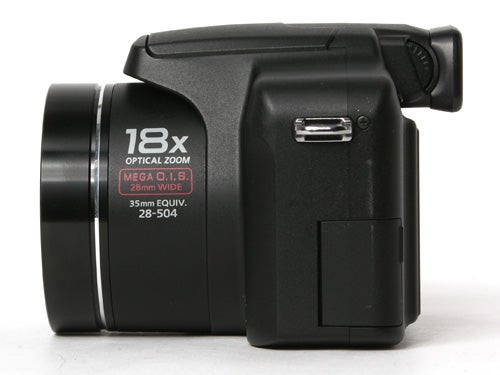
It is a well made camera, and despite the low weight the plastic body feels reasonably robust. The battery/card hatch has a strong metal hinge, the tripod bush is steel, and the front edge of the lens barrel has a wide metal rim, into which the lens retracts when powered down, offering some protection to the most vulnerable component. One small criticism of the construction is the viewfinder eyepiece surround which, like the one on the FZ8, is made of hard plastic rather than the more comfortable rubber, and as I found out is quite capable of scratching spectacles.
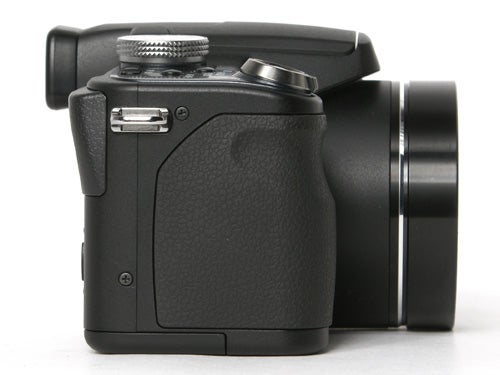
The control interface is very well thought out. It has the same mini-joystick as the FZ8, which is used for exposure compensation, exposure settings in manual mode, positioning the AF point and also accessing a quick menu system for the main functions including MegaOIS mode, focus area mode, metering mode, white balance, ISO setting, picture size and compression. As a control system it is exceptionally easy to use, and allows very rapid changes to key settings. Other options including flash mode, drive mode, self timer, macro focusing and auto-bracketing are accessed via buttons including the D-pad, leaving the actual main menu for more basic settings, such as the adjustable contrast, sharpness, saturation and noise reduction. One example of well-considered design is the AF/MF button. While all the other buttons respond quickly to a single press, this control, which is positioned close to the shutter button, requires a longer press to activate, so you don’t accidentally turn off your AF if you fumble when trying to take a shot quickly.
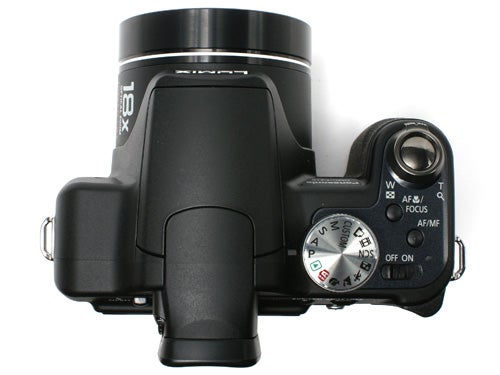
With such a huge zoom range, the quality of the zoom control is of crucial importance, and Panasonic has made a pretty good job of it. It is operated by a rotary bezel around the shutter button, and it has two speeds. Move the control a little and the zoom moves quite slowly, taking around seven seconds to go from one end of the range to the other, slow enough for accurate framing. But push the control all the way over and the zoom speeds up, getting from 28mm to 504mm in less than three seconds.
That fast-moving lens makes the FZ18 pretty quick off the mark for a super-zoom; it starts up in around 2.5 seconds and shuts down again in under two, which is faster than a lot of pocket compacts. The autofocus system is also nice and quick, locking on in under half a second, and it is just as fast in low light and even in complete darkness, within the 2-3m range of the AF assist lamp. The AF area can be quickly moved to any of eleven positions, covering a wide area of the frame. In single-shot mode the camera can manage a shot every 1.7 seconds, which is pretty fast for a powerful camera. As I mentioned earlier, the FZ18 also has a RAW shooting mode, and RAW +JPEG too, and it’s performance in these modes is much improved over the FZ8. In RAW-only mode it can take a shot every 2.4 seconds, while in RAW + JPEG mode it can manage one every 3.4 seconds. It has two continuous shooting modes (not available in RAW mode), a four-shot burst at 3fps or an unlimited mode which can shoot a 2fps until the memory card is full or the battery gives out. Speaking of the battery, the FZ18 is powered by the same 710mAh Li-ion cell as the FZ8. Panasonic claimed 300 shots per charge for that camera, but for the FZ18, which has a bigger lens to move, the claim is 400 shots per charge. I took nearly 200, about 50 of them with the flash, and the charge indicator was still reading two out of three bars, so the claim, unlikely as it sounds, is probably accurate.
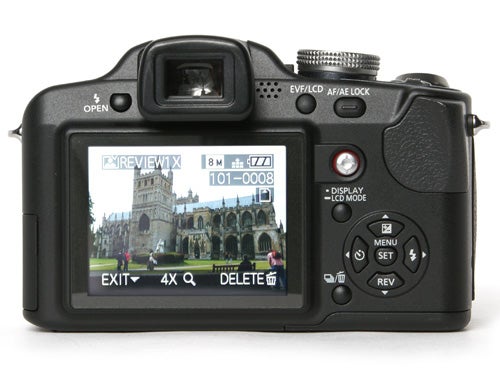
A major feature of the FZ18, and one without which that big zoom lens would be useless, is the optical image stabilisation system, Panasonic’s MegaOIS. As I’ve noted before it is one of the best IS systems on the market, but in the FZ18 it really excels. I found that as long as I held the camera reasonably firmly I was able to take sharp hand-held shots at maximum telephoto (504mm equiv.) at 1/30th of a second fairly reliably, which is nothing short of phenomenal. It represents a stability gain of a full four stops, beating any other IS system I’ve tested, including those on most digital SLRs.
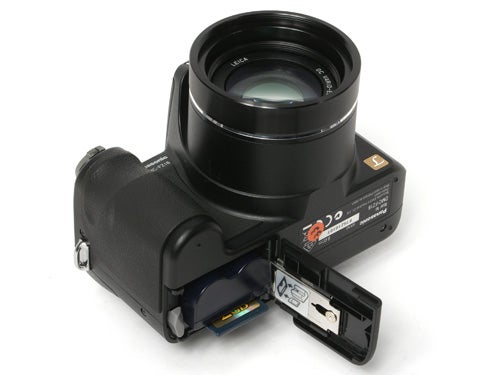
Finally we come to image quality, and here I’m afraid there is some bad news. Given all the fantastic features and performance, why on Earth has Panasonic chosen to cripple the FZ18 with a 1/2.5-in sensor, the size more commonly found in cheap 3x zoom compacts? The pity is that the lens is far and away the best that I’ve seen on a super-zoom camera, producing razor-sharp corner-to-corner detail and a total absence of distortion even at the 28mm end. It’s the first wide-angle compact lens I’ve seen that produces perfectly straight parallels in my test shots. The Venus Engine III is a big improvement over earlier versions, producing fantastic colour and tone, but it is labouring against the odds with that cheap little sensor. Overall detail is no better than most 8MP compacts, and the limited dynamic range clips highlights, rendering the sky as featureless white in most shots. The image noise that has plagued every Panasonic camera is also there except at the very lowest ISO setting, causing major problems at higher settings. Don’t get me wrong; the image quality isn’t bad, and the camera’s other qualities more than make up for any shortcomings, it’s just that with that brilliant lens it could have been so much better.
”’Verdict”’
The Lumix FZ18 is a very nearly the ultimate super-zoom camera, with good performance and handling, an excellent range of features and a simply astonishing lens, made usable by an equally superb image stabilisation system. However it falls just short of greatness due to the inexplicably small sensor, which in turn leads to image noise and dynamic range issues. It’s still the best 18x super-zoom out there though, at least until September.
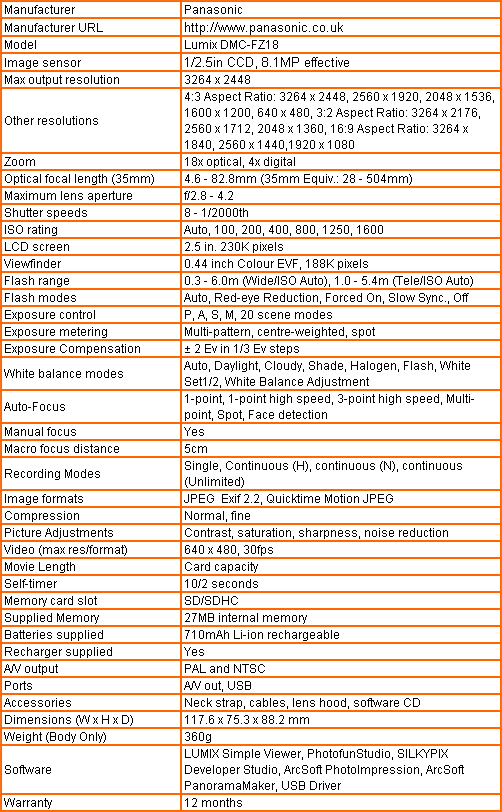
”A range of test shots are shown over the next few pages. Here, the full size image at the minimum ISO setting has been reduced for bandwidth purposes to let you see the full image, and a series of crops taken from original full resolution images at a range of ISO settings have been placed below it in order for you to gain an appreciation of the overall quality.”
—-

—-
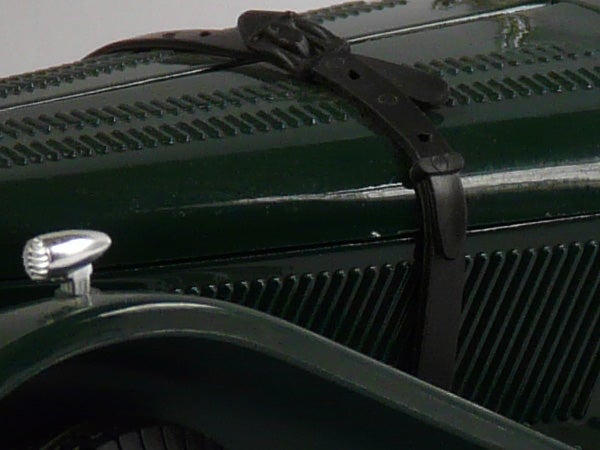
At 100 ISO the image is clean and noise free.
—-
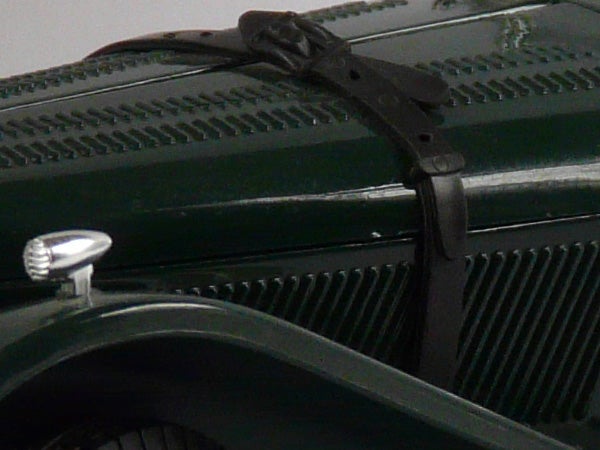
Already at 200 ISO there is some evidence of image noise.
—-
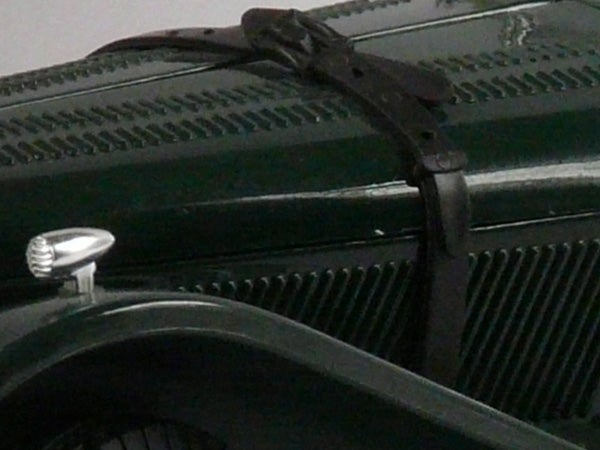
Noise is progressively worse at 400 ISO.
—-
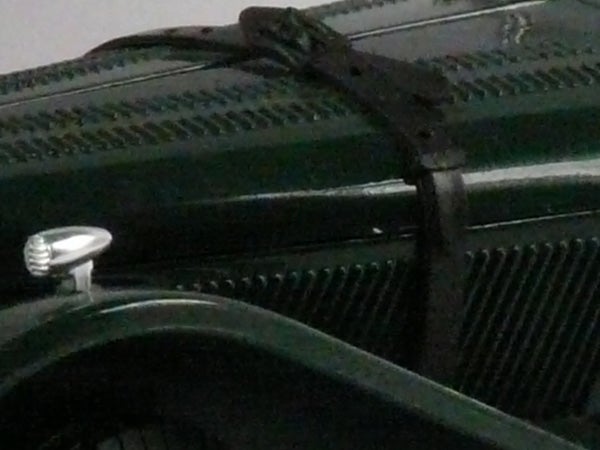
Aggressive noise reduction has smudged out a lot of detail at 800 ISO.
—-

More detail lost, and more noise, at 1250 ISO.
—-

At the selectable maximum of 1600 ISO the image is very poor, but at least overall colour rendition is still ok.
—-

This is the full frame at 1600 ISO.
—-
”A range of test shots are shown over the next two pages. Here, the full size image has been reduced for bandwidth purposes, and in some case a crop taken from the original full resolution image has been placed below it in order for you to gain an appreciation of the overall quality.”
—-
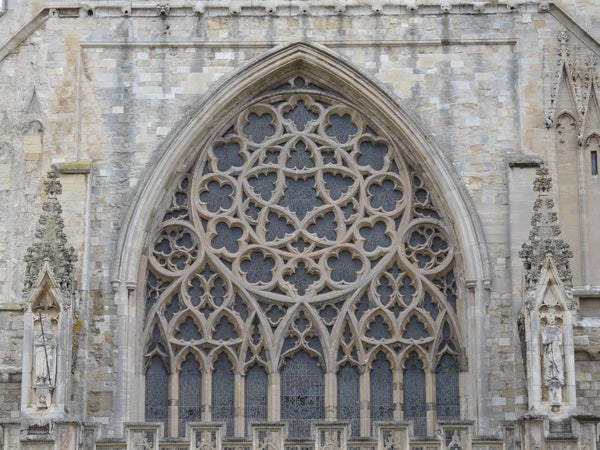
Here’s the usual shot of Exeter Cathedral’s West Window for detail comparison. I take this same shot with every compact camera I test. Click on the image to see it full size or look at the 100 percent crop below.
—-

The actual level of detail isn’t much different to an 8MP pocket compact.
—-

This is the first time I’ve ever seen a wide-angle lens produce no barrel distortion at all. There is no pincushion distortion at longer focal lengths either.
—-

Corner-to-corner sharpness is also outstanding.
—-

The limited dynamic range has burned out the sky in this shot.
—-

However at least there is no purple fringing.
—-
”A range of test shots are shown over the next two pages. Here, the full size image has been reduced for bandwidth purposes, and in some case a crop taken from the original full resolution image has been placed below it in order for you to gain an appreciation of the overall quality.”
—-

The 28mm wide end can fit the whole cathedral into the frame…
—-

…while the 504mm telephoto end lets you zoom in on distant details.
—-

Colour rendition is good, but the limited dynamic range of the tiny sensor has resulted in burned-out highlights.
—-
Trusted Score
Score in detail
-
Value 7
-
Image Quality 8
Features
| Camera type | Super Zoom |
| Megapixels (Megapixel) | 8.1 Megapixel |
| Optical Zoom (Times) | 18x |
| Image Sensor | CCD |
| Image Stabilisation | Optical |
| LCD Monitor | 2.5 in |
| Flash modes | Auto Flash, Red-eye Reduction |
| Video (max res/format) | 848 x 480 |
| Memory card slot | Secure Digital (SD) Card, MultiMediaCard (MMC) |

